On this visit to Noosa National Park we parked at the carpark in Seaview Terrace, Sunshine Beach. We took Beach Access 27 to Sunshine Beach and walked north along the beach to the entry to the national park. We have at other
times parked in McAnaly Drive, which has limited street parking, and walked northeast
into the national park. Walking into Noosa National Park this way avoids the
crowds that walk the Coastal Track from the information center at the end of
Park Road in Noosa Heads.
Walking track map:
http://www.nprsr.qld.gov.au/parks/noosa/pdf/noosa-headland-map.pdf
Walking up into the national park from the beach there is a long steep stairway but the views are worth it.
.JPG) |
| Looking south along Sunshine Beach from the top of the stairs. |
Headland Section from Sunshine Beach to Devils Kitchen and Lion Rock.
.JPG) |
| Devils Kitchen |
.JPG) |
| Lion Rock |
.JPG) |
| Black Jezebel Delias nigrina |
.JPG) |
| Little Shrike-Thrush |
Alexandria Bay
We timed the walk nicely to be at Alexandria Bay at low tide for easier walking.
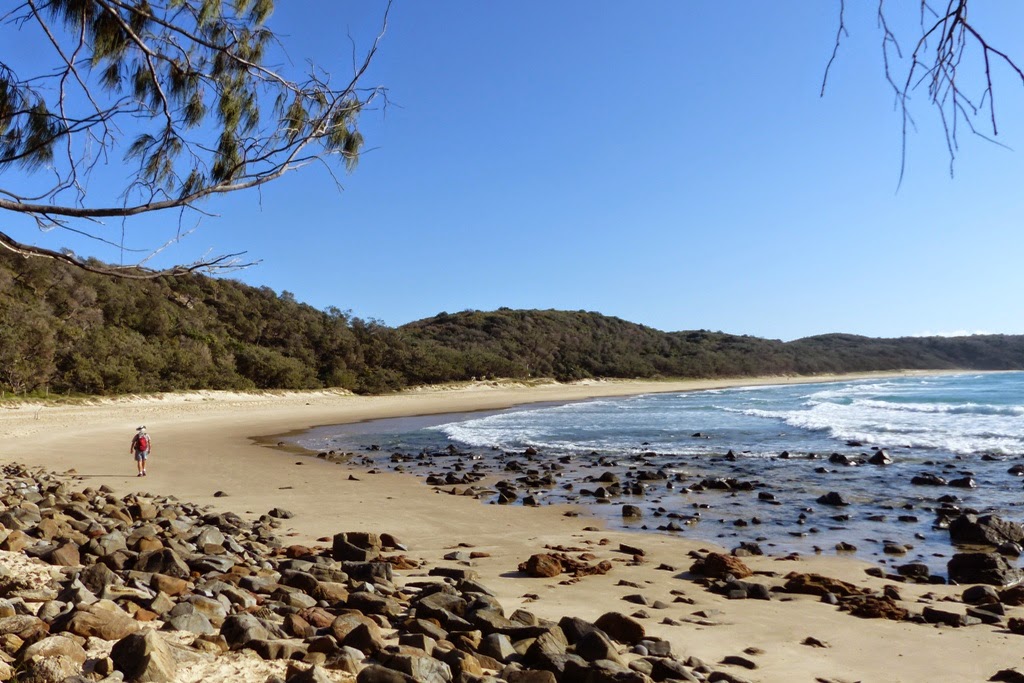.JPG) |
| Walking north along Alexandria Bay |
There are three things you should know about Alexandria Bay:
It is very isolated and beautiful.
It is extremely dangerous to swim here because of treacherous rips and many people have drowned here.
It is a nudist beach.
As we were walking along the beach, I was busy trying to focus on a distant bird in the tree line and I didn't realise until I lowered my camera that there was a nudist doing elaborate poses for my benefit because he thought I was photographing him. LOL.
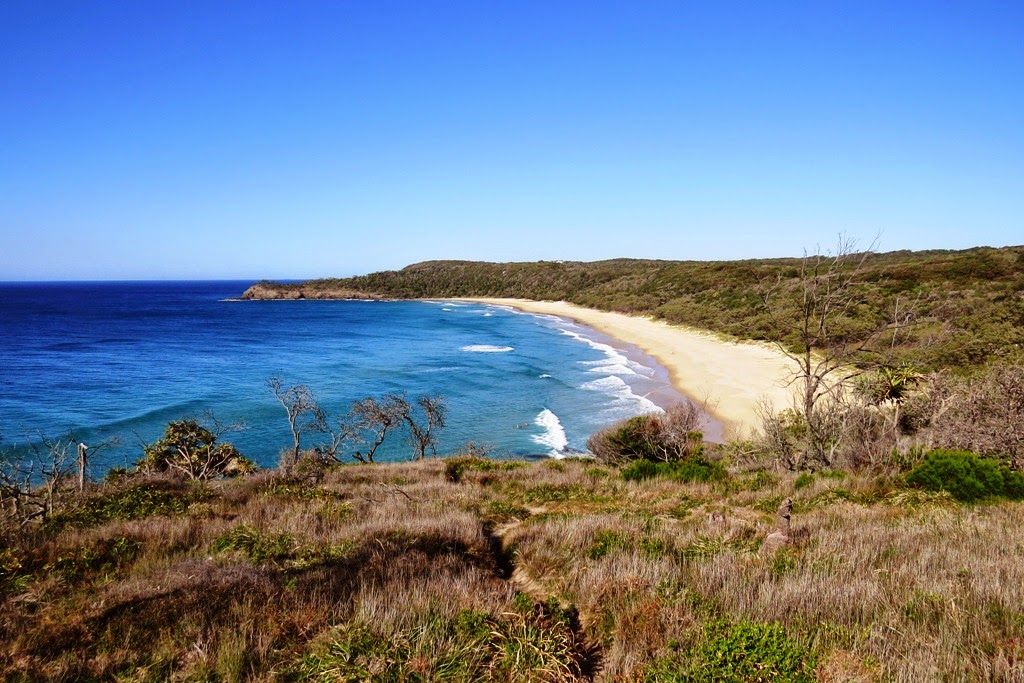.JPG) |
| Looking back (south) over Alexandria Bay |
Hells Gate
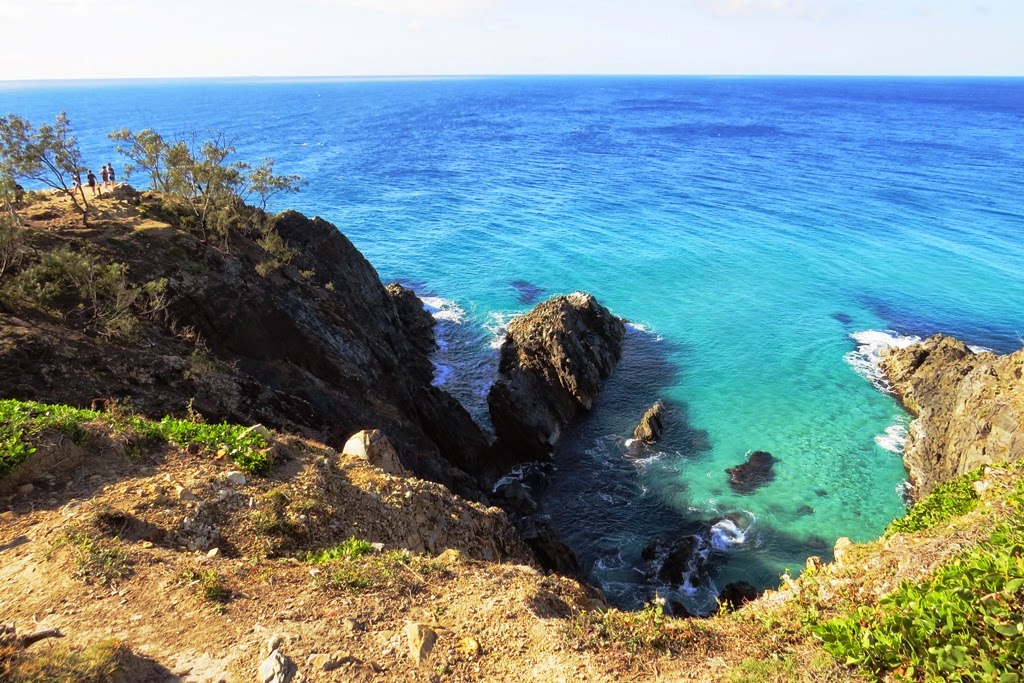.JPG) |
| Hells Gate, Noosa National Park |
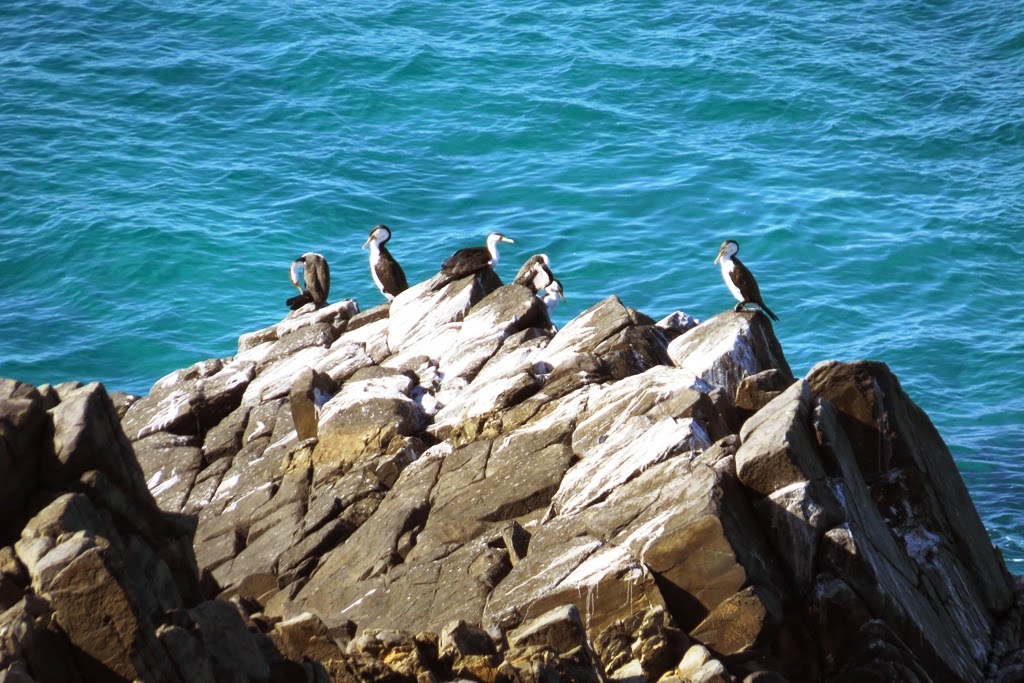.JPG) |
| Pied Cormorants at Hells Gate. |
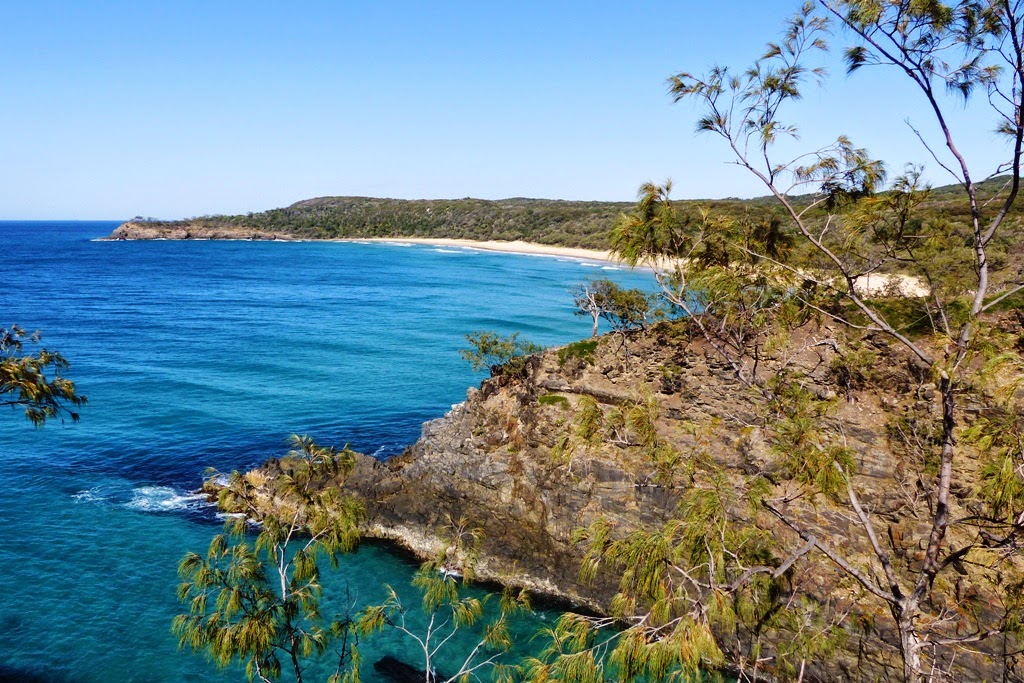.JPG) |
| Major Skink Habitat |
I walked down the right side (when facing the ocean) of Hells Gate, there is a bit of a track to follow along the ridge line but care should be exercised. I have seen Major Skinks Egernia frerei there previously but there were none to be seen on this trip. They look like golden Land Mullets Egernia major and I was hoping to get a photo this time.
Picnic Cove
We walked around the headland with views over Granite Bay and on past Picnic Cove then we turned south on the short link to Tanglewood Track.
.JPG) |
| Views over Granite Bay |
Tanglewood Track
This track is more isolated than the other walks. It is a shady walk through rainforest and woodlands. Here orchids and epiphyts can be seen in the trees. The highlight of the morning was a magnificent Noisy Pitta just standing out in the open on some leafy mulch but it ran away when it saw us stop. Then we took the link to Alexandria Bay Track before taking the link track south to McAnaly Drive.
.JPG) |
| Bar-shouldered Dove |
.JPG) |
| Lace Monitor Varanus varius |
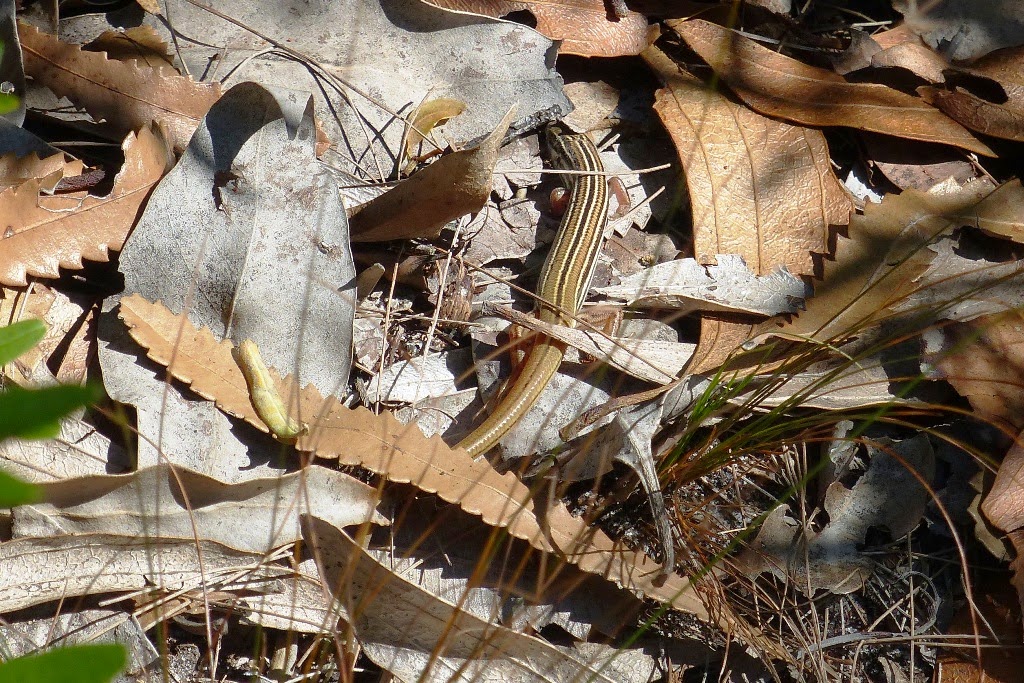.JPG) |
| Copper-tailed Skink Ctenotus taeniolatus |
We walked down McAnaly Drive and returned to the car park.
.JPG) |
| We walked past this interesting house. |
If following this route, allow up to half a day, take plenty of water, a snack and a map as some of the links are fairly confusing. The walk varies from a Class 2 to a Class 4.
We also highly recommend the Coastal Track walk that starts at the main entrance to the National Park, at the end of Park Road Noosa Heads. The walk is a Noosa classic with stunning views and a Noosa surfing vibe.